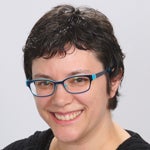Dr. Alexander Nagel recently submitted these updates on the directions his career and research have taken since he graduated from IPCAA in 2010. From studying polychromy in Persepolis to curating exhibitions in Washington, DC, read about Alex’s adventures in his own words below.
After finishing my PhD in 2010 with a dissertation on polychromy and modern material culture preservation on the site of Persepolis in Iran, I worked as Assistant Curator of Ancient Near Eastern art in the Smithsonian Institution’s Freer-Sackler Gallery. Until December 2013 I curated exhibitions on ancient Iranian ceramics and ancient Egyptian glass, co-curated a number of international loan exhibitions including “Nomads and Networks: The Ancient Art of Kazakhstan,” and published articles on materials and archives in the collections, most notably on Ernst Herzfeld, who excavated at many sites in Iraq and Iran including Samarra, Persepolis and Pasargadae. Since December 2013, my office is in the Smithsonian Institution’s National Museum of Natural History, where I continue to work as a Research Associate on projects related to the Smithsonian Institution’s ancient Mediterranean, Egyptian, and Middle Eastern collections.
Since 2010, I have supervised a good number of volunteers and student-interns. Some of them have moved on themselves to work in cultural heritage positions. I guest lectured on heritage preservation, pigments, polychromies, museums and research on sites for local Washington, DC, Maryland and Virginia universities and K-12 schools, and served as assistant secretary of the local Washington DC AIA society. In 2010, I led a successful Smithsonian tour to Iran and lectured for students at the University of Isfahan. In 2013, I published a longer article on aspects of “Colour and Gilding in Achaemenid Architecture and Sculpture” for the Oxford Handbook of Ancient Iran, edited by Dan Potts (New York University). In 2014, I contributed an article “Colour in Ancient Near Eastern and Egyptian Sculpture” for a catalogue for an exhibition on polychromy at the Ny Carlsberg Glyptotek in Copenhagen. A short article for the exhibition “Tools. Extending our Reach” providing information on ancient cuneiform tablets, squeezes, and cylinder seals in the Smithsonian’s National Museum of Natural History was published in 2015. For the Annual Meetings of the American Schools of Oriental Research (ASOR), I developed and chaired three panels on “Collecting and Displaying Ancient Near Eastern Art in the Museum.” For the ASOR meeting in San Diego in 2014, I co-organized a session called “Pigments, Paints and Polychromies in the Ancient Near Eastern context,” together with a colleague from the Oriental Institute Museum in Chicago. It was wonderful to see that our Kelsey Museum presented innovative research on work on polychromy at Abydos.
In addition to my work on the Smithsonian collections and polychromy, I have organized a number of workshops, conferences and sessions related to archaeology and museums in Washington, DC, and I have blogged on aspects of cultural heritage preservation and archaeology. Together with my colleagues from the Washington, DC, Historic Preservation office, I organized an event “Washington, DC, in 10,000 years: Ideas and Archaeologies in the Past, Present and Future” in 2013. Twice a year, since 2010, I also lecture for a Homeland Security Office Immigrations and Customs Enforcement training program, supporting the work of agents in their initiatives to combat the stealing of antiquities worldwide and collaborate against criminal threats to heritage. In 2015, I worked with Italy’s Guardia di Finanza Art Recovery Team for an exhibition and program on “Dialogues on Heritage,” displaying ancient Mediterranean Art in the Italian Embassy in Washington, DC. I have lectured on my work on polychromy at Persepolis at the new Acropolis Museum in Athens, and I gave a number of guest lectures in museums in the US and Europe. I am currently involved in another long-term project in Persepolis focusing on mason’s marks in collaboration with Professor Carl Nylander from the Swedish Academy of Science. A preliminary report about the project was delivered at a conference at the University of Pennsylvania in Philadelphia in May 2015. My research continues to focus on cross-cultural dynamics between Greece, the Eastern Mediterranean and the Achaemenid Persian Empire. My first book, Pigments and Power: Approaching the Polychromies of Achaemenid Persepolis, will be published in the series Persika in 2016.This is the first monograph that systematically introduces important, as yet unexplored, aspects of the role and status of painters and gilders in the ancient Near East and the Eastern Mediterranean, and I make arguments for the importance of combining innovative analytical research methods, archival history, and research on conservation and archaeology.
Have updates of your own to share? Submit them to ipcaanewsletter@umich.edu.


 tenure-track assistant professor of art history for several years, she left the academic mainstream to start her own business as a productivity coach. I met with her at the AIA/SCS Annual Meeting in January 2015 to learn more about where she is now and how she got there.
tenure-track assistant professor of art history for several years, she left the academic mainstream to start her own business as a productivity coach. I met with her at the AIA/SCS Annual Meeting in January 2015 to learn more about where she is now and how she got there.